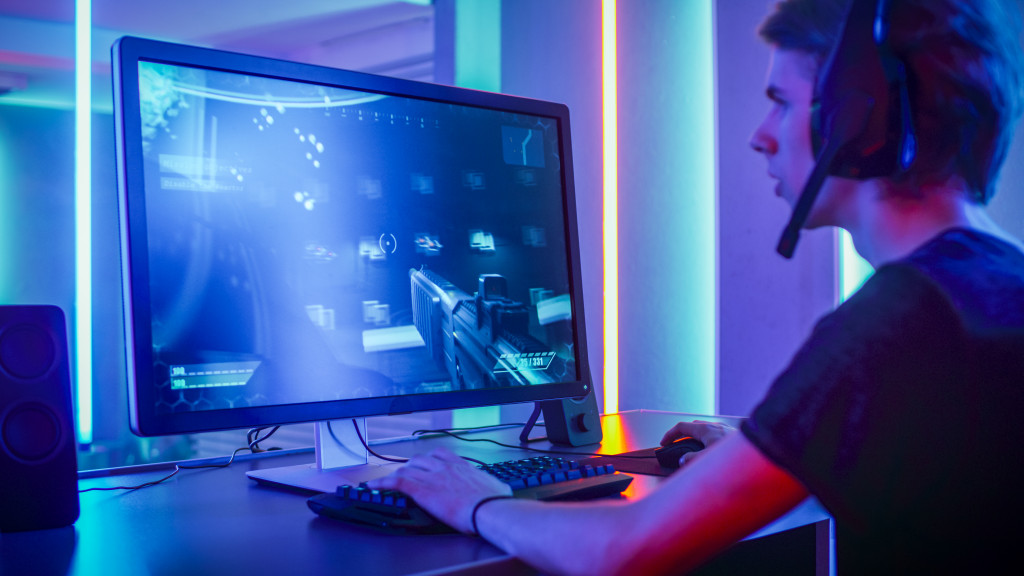PC gaming has seen a resurgence in recent years, thanks to the release of several blockbuster titles and the rise of competitive eSports. The value of the global Esports market was a record $957.5 million in 2019. Today, this number has increased to around $1.08 billion — a 10% enlargement in the last two years. So, if you’re looking to get in on the action, you will need a gaming setup that can handle the demands of today’s games. Whether you plan on gaming as a hobby or a competitive sport, the proper gaming setup is a necessity. Here are five tips to custom-build your gaming setup.
1. Choose the right CPU
Regarding gaming, processor speed is essential, but it’s not the only thing you should consider. Your CPU is one of the most crucial aspects when considering your gaming pc high performance. This is primarily because your graphics card will be limited by your processor. Games are becoming increasingly reliant on multiple cores, so you’ll want a CPU that has at least four cores.
As such, you must carefully consider what games you want to play and how much you’re willing to spend on your processor. If you’re looking to play the latest AAA titles, you should look for a CPU that has a high clock speed and is overclockable. On the other hand, if you’re more interested in eSports or less demanding games, you can save a bit of money by opting for a less powerful processor.
2. Get a graphics card with at least 4GB of VRAM
A graphics card is responsible for rendering the images you see on your screen, so it’s an integral part of any gaming setup. Make sure you get a card with at least 4GB of VRAM; more is better, but anything less than 4GB will likely bottleneck your system. VRAM is vital for two reasons. First, it allows your graphics card to store more data, which is essential for high-resolution textures. Second, it enables your card to handle multiple monitors. So if you’re planning on gaming on a 4K monitor or using multiple monitors, you’ll need a card with enough VRAM to support those resolutions. Nvidia’s GTX 1060 and AMD’s RX 580 are excellent options, as they offer outstanding performance at a reasonable price.
3. Invest in a good monitor

Your monitor will be one of your most essential pieces of hardware, so don’t skimp on it. Look for a monitor with a high refresh rate (at least 144Hz) and low input lag (under 10ms). You should also ensure the monitor is compatible with your graphics card’s ports (DisplayPort or HDMI). Most importantly, make sure the monitor is the right size for you. If you’re planning on using multiple monitors, you’ll need to ensure your graphics card has enough ports to support them. Conversely, if you’re only planning on using a single monitor, you don’t need to worry about getting a card with multiple ports.
4. Get a comfortable gaming chair
You’re going to be spending a lot of time sitting in front of your gaming setup, so you’ll want a chair that’s comfortable and ergonomic. Look for a chair with adjustable back support and armrests, and make sure it’s made from breathable materials like mesh or leather.
Leather gaming chairs are often seen as the more luxurious option, but they can be pretty expensive. Mesh gaming chairs are a more affordable option that offers comfort and breathability. If you’re looking for a chair that balances these two options, consider a leather and mesh gaming chair. These chairs typically have a leather back and seat with a mesh backrest, providing comfort and breathability.
You may also opt for an ergonomic gaming chair, which can help reduce strain on your back and neck. Some of the best gaming chairs in the market are the DXRacer Formula Series and the Secretlab Omega. These chairs offer great features and comfort, but they come at a higher price.
5. Consider an extended warranty
Gaming setups for your space can be expensive, so you’ll want to protect your investment with an extended warranty. Many manufacturers offer extended warranties for an additional cost, so be sure to factor that into your budget when planning your build. An extended warranty will cover you if your hardware fails, and it can give you peace of mind knowing that your investment is protected. When considering an extended warranty, read the fine print and understand what’s covered and what’s not. Some warranties only cover hardware failures, while others may also cover accidental damage.
In Closing
Building a custom gaming setup can be a daunting task, but it doesn’t have to be if you know what you’re doing. With these five tips in mind, you’ll be well on putting together a rig that will let you enjoy all your favorite games for years to come. Happy gaming, and good luck!
